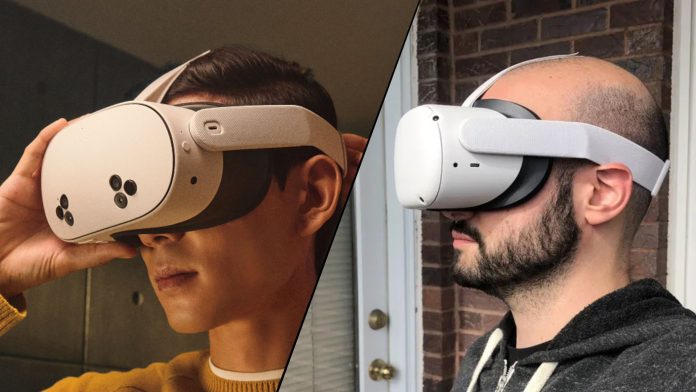We’re comparing the Meta Quest 3S vs Quest 2 for anyone contemplating upgrading from the 2020 headset. Despite the higher number, the Quest 3S will feel almost identical to Quest 2 owners when they initially put it on. Its enhancements are more about hardware than design, but they are nevertheless noteworthy.
The Quest 2 sold over 20 million devices due to its low price and wire-free design; the same is true for the Quest 3S, which costs the same ($299), weighs nearly the same, has no tethers, and reintroduces the same gaming library – but with improved graphics.
Based on our Quest 3S hands-on, we have a good idea of what Quest 2 users may anticipate from the upgraded headset. Let’s break down everything.
| Category | Meta Quest 3S | Meta Quest 2 |
|---|---|---|
| CPU | Snapdragon XR2 Gen 2 | Snapdragon XR2 Gen 1 |
| RAM | 8GB | 6GB |
| Storage | 128GB ($299); 256GB ($399) | 64GB, 128GB, 256GB |
| Display | 1,832 x 1,920 LCD; 773 PPI; 20 PPD | 1,832 x 1,920 LCD; 773 PPI; 20 PPD |
| FOV | 96º H; 90º V | 96º H; 90º V |
| Lens | Fresnel | Fresnel |
| Mixed reality | 4MP RGB (18 PPD) | B&W Mono (4 PPD) |
| Depth sensor | Software | None |
| Slimness (excluding facial interface) | 73.9mm | 93.1mm |
| Weight | 514g | 503g |
| Battery | 4,325mAh | 3,640mAh |
| Controllers | Touch Plus | Touch |
Meta Quest 3S vs Quest 2: What’s the same?
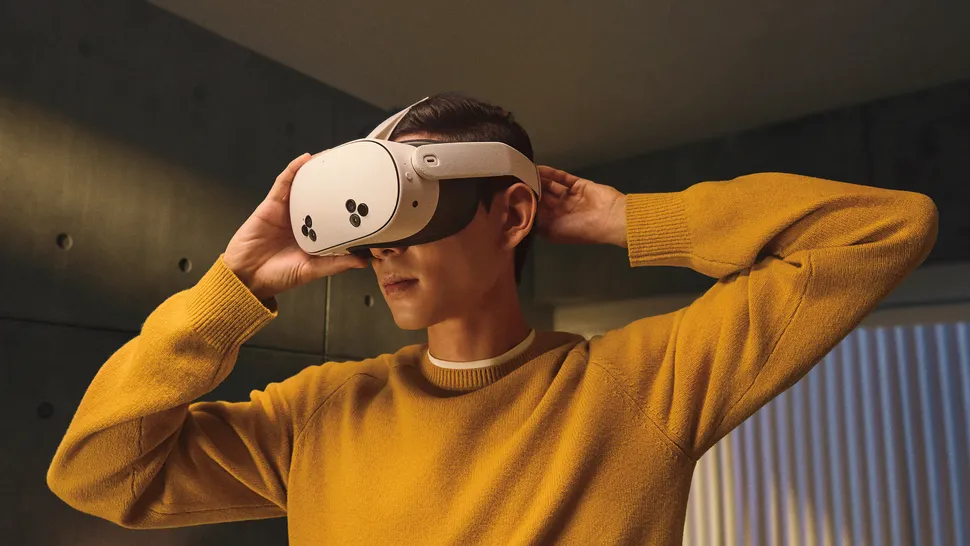
To make the Quest 3S cheap, Meta held back several of the Quest 3 enhancements from the Quest 2. As a result, the Quest 3S and Quest 2 share certain characteristics:
Fresnel lenses: While the Quest 3 was improved to pancake lenses, which made the headset 30% thinner, the Quest 3S retains the same Fresnel lens, requiring additional free space between the lens and the display. It also produces a distinct “sweet spot” when using either headset; you’re more likely to turn your head to explore a VR world because the periphery appears blurrier than it does with pancake lenses.
IPD lens adjustment: You can set the lenses to one of three interpupillary distances (IPD): 58mm, 63mm, or 68mm. We have a guide on how to measure your IPD that states that if your IPD does not exactly match these presets, you can shift the lenses between these settings — around 60.5mm or 65.5mm.
LCD resolution: Meta employs the same LCD in the Quest 2 and Quest 3S, with 1,832 × 1,920 pixels per eye, equating to 773 pixels per inch or around 20 pixels each degree. When comparing the images of the Quest 3 to the Quest 2, the newer headset achieves 2,064 x 2,208, or almost 25 PPD, representing a significant increase.
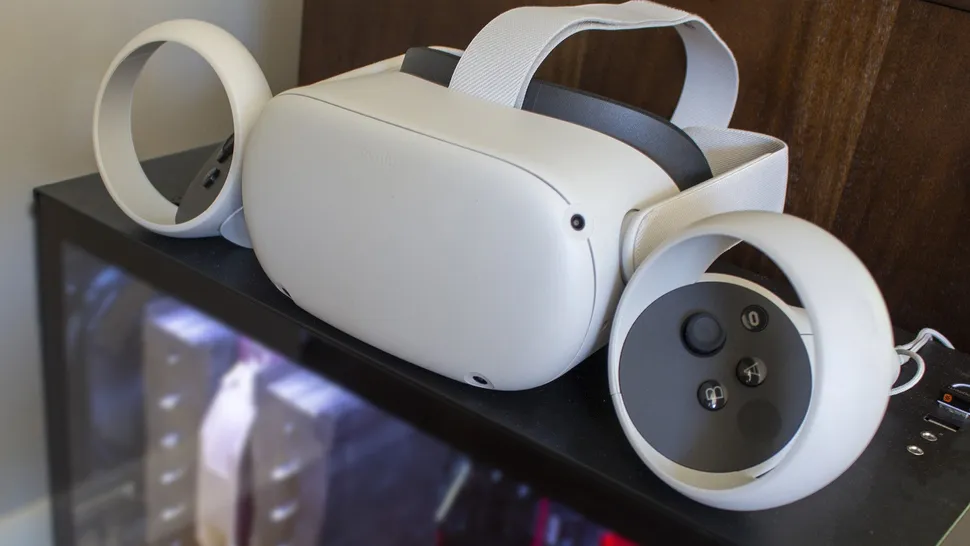
Field of view: The Quest 3S and Quest 2 feature 96º horizontal and 90º vertical views, but fall short of the Quest 3 (110º horizontal and 96º vertical).
Wireless, modular design: This is self-explanatory, but it’s worth noting that the Quest 3S and Quest 2 run solely on battery power, unlike most other VR headsets such as the Valve Index, PSVR 2, and Apple Vision Pro. Also, Meta designed the Quest such that you may remove the strap or facial interface without having to unscrew anything or forfeit your warranty. This allows you to install a superior attachment with minimal hassle.
Meta Quest 3S vs Quest 2: Design differences

Despite the fact that both headsets use Fresnel lenses, Meta managed to make the Quest 3S 20% slimmer than the Quest 2, or around 19mm / 0.75in. thinner. Meta also made the Quest 3S appear flatter, with a sharper line around the front edge, whereas the Quest 2 is more curved.
In terms of weight, the Quest 2 is 11 grams lighter, or roughly 0.4 ounces. You won’t notice a difference; in either case, you’ll want an Elite Strap to better balance the weight.
The most noticeable design difference is the camera array; we’ll get into mixed reality later, but from an aesthetic standpoint, the Quest 3S places its cameras front and center in a colorful triangular arrangement, whereas the Quest 2 camera sensors are tiny, isolated recesses.
Unfortunately, Meta elected to remove the 3.5mm headphone port from the Quest 2 and 3 in the 3S; your only options are to utilize the built-in speakers or wireless earbuds with a USB-C receiver that allows charging passthrough if you have a battery pack. On that note, the Quest 3S includes a USB-C charging connector in the right arm, whereas the Quest 2 port is located directly on the headset body.
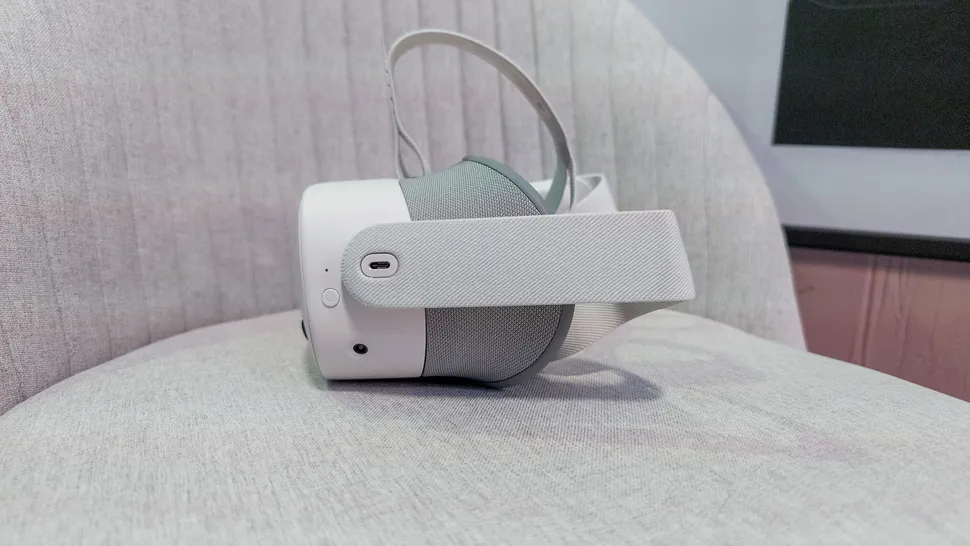
Both headsets come with a basic fabric strap, and our Quest 3S tester reported that it “felt identical” to the Quest 2 in terms of comfort and support. However, there is one difference: the Quest 2 strap featured a single broad top strap with velcro, whereas the Quest 3S top strap branches off in a Y shape to cup both sides of your head, theoretically preventing it from slipping to one side as readily.
Either headset provides around 2.5 hours of battery life in ideal settings (according to Meta), but we anticipate that your Quest 2 capacity has naturally decreased over the last four years. The older headset has 684mAh less capacity, however the Quest 3S consumes more battery life due to features such as upgraded cameras, LEDs, and additional RAM. Regardless, anyone who purchased a Quest 2 battery pack would likely want one for the Quest 3S.
In terms of controller design, the Quest 3S and Quest 3 both feature next-generation Touch Plus controllers. In terms of tracking precision, they are similar to the Quest 2, but they do not require the huge tracking rings, and TruTouch Haptics for games have been improved.
Meta Quest 3S vs Quest 2: Hardware and camera differences
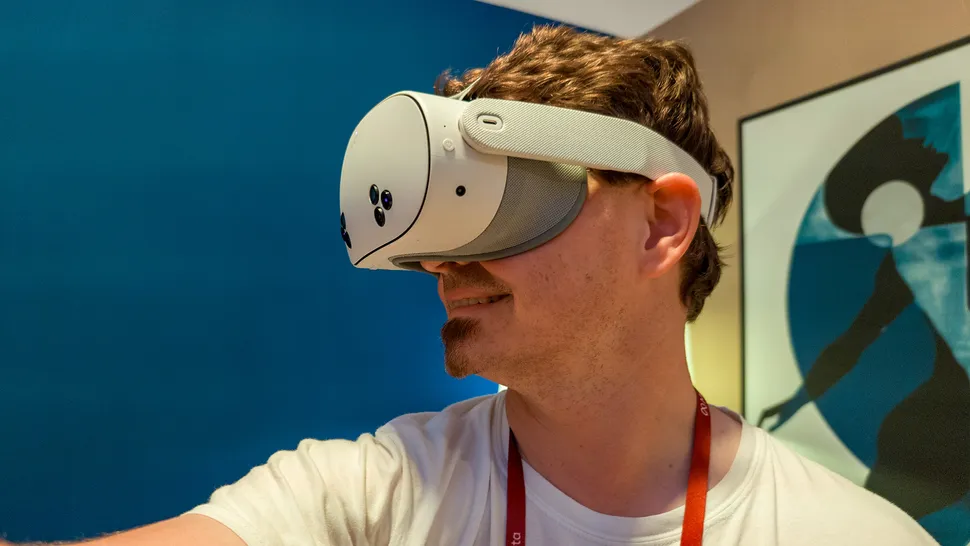
The most significant Meta Quest 3S enhancement is in performance. It uses the Qualcomm Snapdragon XR2 Gen 2, whereas the Quest 2 uses the XR2 Gen 1. It also includes 8GB of RAM rather of 6GB.
Practically speaking, the Quest 2 and Quest 3S share the majority of the same hundreds of Quest games. On the Quest 3S, however, many of your old Quest 2 titles receive graphical enhancements; developers can patch games to include 4K textures, faster refresh rates, dynamic lighting and shadows, and decreased fog, among other adjustments at their discretion.
Not all Quest 2 games receive Quest 3 and 3S patches—we know of roughly 100—but even without a special patch, games and applications will load faster.
There are also certain planned Quest games that will only be available on the Quest 3S and 3, as the Quest 2’s CPU cannot run them. AAA titles such as Alien: Rogue Incursion and Batman: Arkham Shadow will cause FOMO for Quest 2 owners unless they upgrade, and we may see more Quest 3 exclusives as the Quest 2’s chip becomes obsolete and more users switch to newer headsets.
Quest 3 games, such as Laser Dance, Hello Dot, Living Room, and Starship Home, are more likely to be incompatible with Quest 2. This also applies to software features such as Meta AI with Vision, which require high-resolution passthrough.
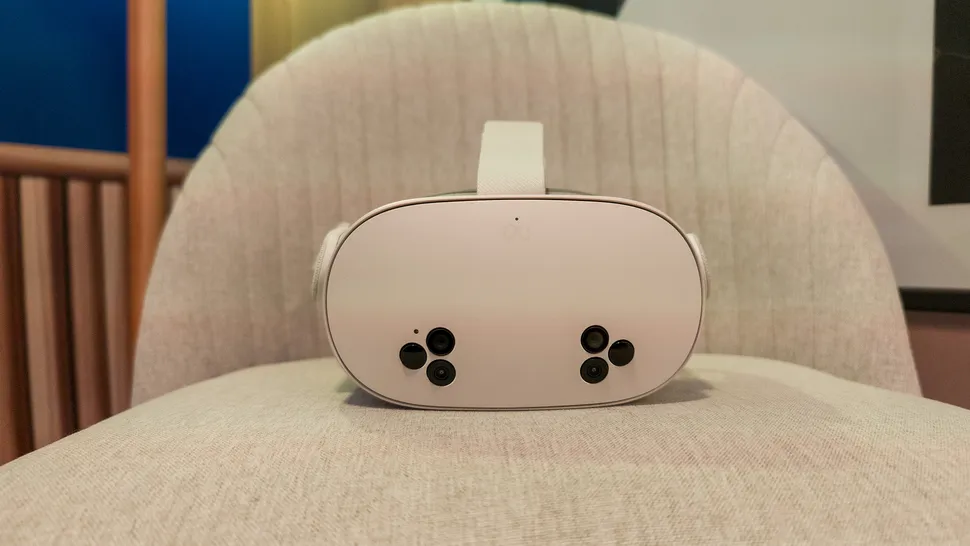
On that note, the Quest 2 and Quest 3S have the same number of standard VGA sensors for inside-out tracking, but when it comes to passthrough, the Quest 2 employs a black-and-white camera with less than 1MP resolution, displaying only 4 PPD in unattractive, blurry gray when you check out your surroundings.
The Meta Quest 3S received the same 4MP cameras as the Quest 3, which provide 18 pixels per degree in full color. While mixed reality mode experienced several flaws in the year since the Quest 3’s release, the v64 upgrade enhanced color and resolution, while the v66 version eliminated warping around hands and objects. All of these improvements are built into the Quest 3S from the start, so you don’t have to remove the headset as frequently as you would with the Quest 2.
According to Meta, these dual 4MP cameras support software-based depth tracking. The Quest 3 features a hardware depth sensor, but the Quest 2 was not designed to measure depth in the same way, so the Quest 3S should theoretically perform better for hand tracking – though we recommend waiting for our full review for confirmation.
Another intriguing innovation to the Quest 3S is two flood LEDs “for illumination and more reliable hand interactions across environments and lighting conditions.” In principle, this would let you to play games in poorly lit spaces without danger of the headset failing to follow your actions; we were unable to test this in the typically lit Meta demo space, so you’ll have to wait for our review to find out how well it works.
Meta Quest 3S vs Quest 2: Should you upgrade?

The Meta Quest 3S is clearly superior to the Quest 2; the only question is whether the changes are sufficient to justify extra $299 (or $399 with doubled storage).
Meta no longer sells the Quest 2; you may be able to acquire one used for a low price, but the lack of mixed-reality hardware is a huge drawback in our opinion. It makes using a Quest 3S headset considerably less isolating, so you don’t have to keep putting it on and off if you’re a parent or pet owner who needs to put out fires.
While new games are added to Quest 2 on a daily basis, their versions appear antiquated, have a reduced refresh rate, and take longer to load. The Quest 3S still has the same resolution and lenses, true, but even if you’re only seeing a sweet spot, it’ll still look and run better than before.
If you’re not sure if the Quest 3S is adequate for you as a Quest 2 owner, check out our Quest 3S vs. Quest 3 guide and decide whether it’s worth the extra money for a higher-resolution, clearer, and wider picture.


